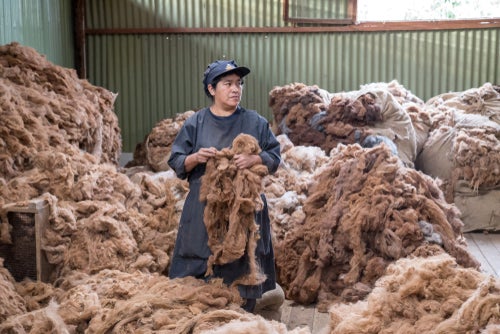
The World Trade Organisation (WTO) has reported that Peru has launched an inquiry into what is considers a glut of imports that is undermining the commercial health of the Peru apparel and textile industry’s manufacturers.
It comes after the country’s Commission on Dumping, Subsidies and the Elimination of Non-Tariff Trade Barriers of the National Institute for the Defence of Competition and the Protection of Intellectual Property (Indecopi) reported that clothing imports between 2016 and 2020 rose by 253.8% and they are still rising – in 2021 (January – June) they rose 8.9% year-on-year. As a result, between 2016 and 2020 clothing imports grew their share of the Peru apparel market by 13.4%, increasing it by another 2.9% year-on-year in January-June 2021. The report concludes that there is a reasonable indication of serious injury to the domestic apparel industry, including its internationally important alpaca segment.
“Peru is a small market compared to China and some other Asian countries. Hence, a garment can enter Peru for much less than the value of an identical or similar product entering the United States, a market several hundred times larger than ours. Such a situation has promoted a disproportionate increase in imports from China and other Asian countries, causing severe damage to the domestic Peru apparel industry, which is why safeguards are necessary,” explained Martín Reaño, manager of Peru’s Textiles and Clothing Committee of the National Society of Industries.
Indecopi highlighted China and Bangladesh suppliers as causing the most problems through increasing exports to Peru, with the objective of the safeguard duty being to give local ‘pymes’ (small-and-medium-sized enterprises) and mipymes (micro-enterprises) a fair chance to compete with clothing giants from Asia.
The investigation is still open and affected parties can comment until 24 February. Nevertheless, at any time, Indecopi can recommend the application of provisional safeguard duties lasting 200 days. If that happens, a government commission comprising the economy and finance ministry (MEF), production ministry (PRODUCE), and the foreign trade and tourism ministry (MINCETUR) will examine whether to confirm the duties. They have “a relatively short period to decide whether the provisional measures are applied or not,” said Reaño.
He doubted the move would be challenged at the WTO, claiming Peru has a tougher standard for imposing these tariffs than in global trade agreements. He added there was no threat to any free trade agreements that Peru has signed with its partners or the WTO. Peru signed a Free Trade Agreement (FTA) with the US in 2009 and with the European Union in 2012.
The government of Peru, led by President Pedro Castillo, leader of Marxist party Free Peru, argues the country has maintained one of the lowest tariff and non-tariff restrictions for the import of clothing worldwide during the last five years, which has eased the increasing flow of garments from China and Bangladesh to the Peruvian market.



